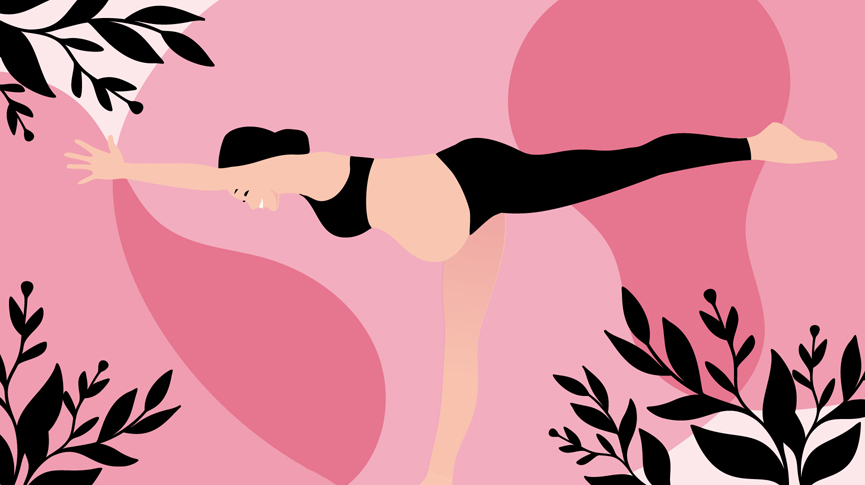Kegel Exercises After Birth: A Must for New Moms

Bringing home a new baby is exciting and as a new mom your highest concern is making sure everything is perfect for your little one. However, it’s just as important to take care of your own health and wellbeing, because pregnancy and childbirth have a big impact on your body.
Eating well, sleeping, and managing your weight are an important part of recovery, but even more important is getting your core muscles back to their pre-baby strength – particularly your pelvic floor. And there’s no better way to improve pelvic floor strength than Kegel exercise.
The muscles of your pelvic floor are responsible for supporting your pelvic organs like the bladder, uterus, and bowel, helping you maintain control over urination and bowel movements. Weak pelvic floor muscles can lead to incontinence or even pelvic prolapse, where your organs slip down into your vagina.
Nearly 40% of new moms report leaky bladders after childbirth and half of all women who have children will experience some form of pelvic prolapse.
Pregnancy and Childbirth: The Long Stretch
Your body has been through a lot, so it’s not surprising that things are not in the same shape as they once were. Luckily Kegel exercise is the ideal solution to pregnancy recovery and taking control over your pelvic health.
Loose Ligaments
Pregnancy hormones loosen your ligaments and allow your body to accommodate the new baby. Those ligaments eventually solidify again after breastfeeding, but often they are much more stretched out than before.
The average pregnancy adds between 25 and 35 pounds of extra weight to your body – all sitting squarely on top of your pelvic floor muscles, which stretch and strain to hold the weight. Having stronger muscles to assist those ligaments, both during and after pregnancy, can protect you from incontinence, vaginal atrophy, and even prolapse when you get older.
Little Leaks
As your baby has grown it has pushed your pelvic organs, like the bladder and urethra, out of the way (as evidenced by the sprints to the toilet!). After delivery those organs return to their pre-baby locations, but they can need a little help to get there.
During childbirth you use your pelvic floor muscles to push your baby out and into the world. All that pushing can strain your muscles, and they have to stretch to at least 10 centimeters to allow the baby’s body through and into the birth canal (vagina). In many women this weakens the muscles and can lead to problems with incontinence.
When you start or stop urinating, your pelvic floor muscles are helping to open and close your urethra and squeeze the urine out of your bladder. By strengthening with Kegel exercises you can regain the strength of your pelvic muscles and avoid a future of crossing your legs when you laugh (or cough, or sneeze).
Healthy Healing
After delivery your pelvic floor muscles may be weakened or damaged from pushing, and the muscles of your uterus, cervix, and vagina might have also been torn during delivery. In some cases your doctor might have to cut your perineum to ease birth and minimize tearing (called an episiotomy).
Everything needs to heal and those muscles need to be strengthened so you can avoid long term health problems. Kegels can increase blood circulation to the area and encourage the healing of any tears or episiotomies you experienced during childbirth. Exercising the area also creates flexibility in the new tissue and might help with pain or tenderness due to scarring.
For the first 6 weeks after birth you should ease into a Kegel routine, doing them unassisted and letting yourself heal up a bit. Afterwards you can start using a Kegel exerciser to guide you through a personalized routine that’s perfect for your strength level and encourages you to get back into pelvic shape.
Rekindling Intimacy
A big concern for many new moms is making sure that their bodies can return to their pre-baby shape and fitness, which contributes to their comfort with having sex again. In addition to supporting all of your pelvic organs, your pelvic floor is also partially responsible for the tightness of your vagina.
The stronger your pelvic floor is, the more toned your vagina is, and that means increased sensations for both you and your partner during sex. Stronger pelvic floor muscles have also been linked to more frequent orgasms – and that’s definitely an added bonus to keeping up with your Kegels! Find out more about sex post-pregnancy here.
C-Section Protection?
And just in case you think a cesarean birth has completely protected your pelvic floor, think again: 16% of moms who gave birth through cesarean section report problems with bladder leaks as well. The loosening of ligaments and the additional weight of pregnancy happens to every woman.
Whether you have had children through vaginal or cesarean birth, strengthening your pelvic floor is absolutely necessary for your recovery after pregnancy and should be done as a regular part of your exercise routine throughout your life.
Where to start?
Kegel exercising is one of the simplest solutions to some very common problems, but unfortunately almost 50% of women struggle to isolate the correct muscles for a Kegel contraction so it’s extremely important to get your technique perfected early.
To be sure you’re using the right muscles insert one lubricated finger approximately 2cm inside your vagina. Rest your finger against the internal sidewalls as you squeeze and lift your anus, urethra, and vagina to feel your pelvic floor muscles contracting. It should feel similar to the movements that start and stop urine flow. You can also ask your doctor to help ensure that you are doing the exercise correctly.
There are many different ways of doing Kegel exercises but the best way to start and stick with a Kegel routine is to have an exerciser that guides you through a routine tailored to you. This will make it easy to see improvement and motivate you to keep with it.
No matter what method you choose, making Kegels a part of your regular exercise routine is beneficial throughout your entire life, but during postpartum recovery it can be especially helpful in getting you back to your best. Get started!

A collective group of “lady experts” at Intimina who love sharing our personal experiences, even when they are a little too personal. We believe it’s time to start breaking down the taboos around menstruation, motherhood, and menopause, and start owning our female health.


